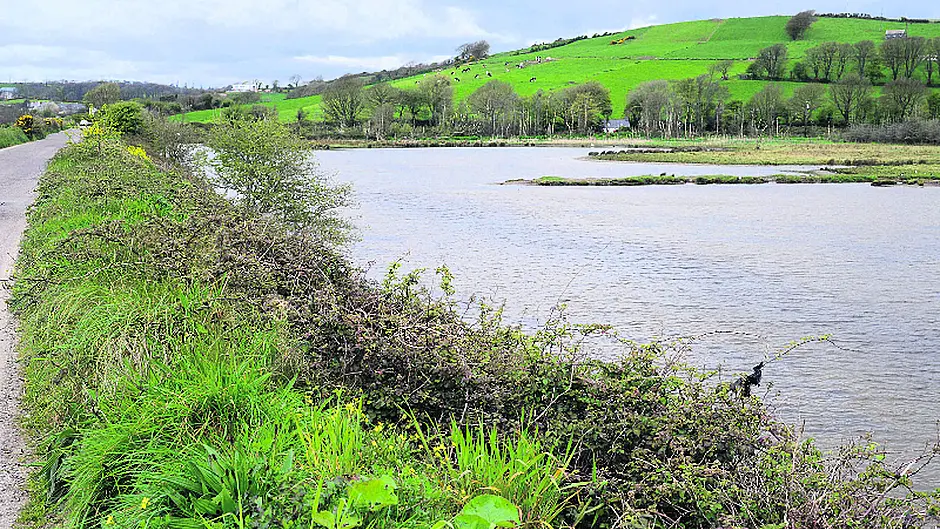The town needs to make more of the real jewels in its crown – its stunning wildlife-rich wetlands, says Deirdre Clenet
The town needs to make more of the real jewels in its crown – its stunning wildlife-rich wetlands, says Deirdre Clenet
CLONAKILTY has once again topped the polls, receiving another prestigious award – this time for ‘Best Town in Ireland and the UK’, received in November.
This indicates a community with keen awareness of the town’s built environment; a strong sense of civic pride and the vision and determination to make their hometown a great place to live in.
In its citation on presenting the award, the Academy of Urbanism summarised the town’s main attributes which influenced their decision, including the ‘quality of the town centre, its location close to the sea and its beautiful beaches’.
But nowhere did it mention Clonakilty’s natural heritage – the extensive wetlands stretching from the edge of the town along the route to those beautiful beaches at Inchydoney.
The wetlands are a natural complex of wildlife habitats supporting diverse communities of wild plants and animals. These are recognised by the Irish government (and the European Union) as being of national importance and are legally protected under Ireland’s Wildlife Act.
But what many people don’t know is that the Clonakilty Bay/marshland area has been classified as an SPA (Special Protection Area) already.
Globally, wildlife habitats are being destroyed at an unprecedented rate. The WWF (World Wildlife Fund) in its Living Planet report published in Oct 2016 revealed some alarming facts – the populations of vertebrate animals (mammals, amphibians, birds and fish) have decreased in abundance by 58% since 1972.
The most common reason for this is loss of habitat. The global wildlife web, of which we are an integral part, is unravelling.
In 2011 the European Union initiated a Biodiversity (biological diversity) strategy to halt the destruction of wildlife habitats in Europe. It selected a Europe-wide network of 26,000 protected wildlife sites, including Clonakilty Bay.
Wetlands are one of the most threatened habitats on the planet, having decreased by an estimated 50% in the last hundred years.
Clonakilty Bay is a nationally important wetland for birds, mainly wildfowl and waders, with over 8,000 birds of many different varieties such as curlews, dunlin, shelduck, snipe, oystercatcher, mute swan, gulls, lapwing, ringed plover, and more. The globally rare black-tailed godwit, which is a frequent visitor here, has seen a 50% decline in its population over the last 25 years. The global populations of the lapwing and ringed plover are also decreasing. the curlew and dunlin are becoming increasingly less common in Ireland.
Many of the birds are migratory, flying thousands of miles to Clonakilty Bay from as far away as Iceland, Northern Siberia, Eastern Europe and Canada – one of the great wonders of the natural world. Large flocks can be seen arriving and leaving Clonakity Bay throughout the year. It really is a birdwatcher’s delight.
The Bay, with its mosaic of sandbanks and mudflats, is a rich feeding ground for the birds – the rich marshlands provide roosting sites when the rising tide covers them. Many species breed in the marshes, producing fledglings hidden in the tall rushes and sedges, out of sight of predators. Biodiversity abounds here and every effort must be made to conserve and protect such essential wildlife habitats.
The Irish government is obliged under Natura 2000 to implement and oversee management plans ensuring that these objectives are met. But so far its progress is falling badly behind.
The European Commission Report (Ireland) in 2015 tells us that ‘Ireland’s wetlands have an unfavourable conservation status and are continuing to deteriorate’.
So where in Clonakilty’s town centre is the billboard informing visitors about this ‘jewel in the crown’ of Ireland’s wildlife habitats – all just a short walk or bike ride outside the town?
Where are the bird hides where people can observe myriad birds without disturbance?
Where are the elevated boardwalks in the marshes where teachers can take their pupils to pond dip and experience the wonders of nature?
Is there a programme of guided walks explaining where to look and what can be seen?
Perhaps now is the time to start a Clonakilty Wildlife Group. Clonakilty’s natural heritage is something to celebrate, to shout loudly about. The community has worked wonders for its built environment.
Now it’s time to look at the natural environment.
Hopefully another town accolade is waiting – in the wings!
Deirdre Clenet is a Clonakilty-born biologist and ecologist living and working in London.








